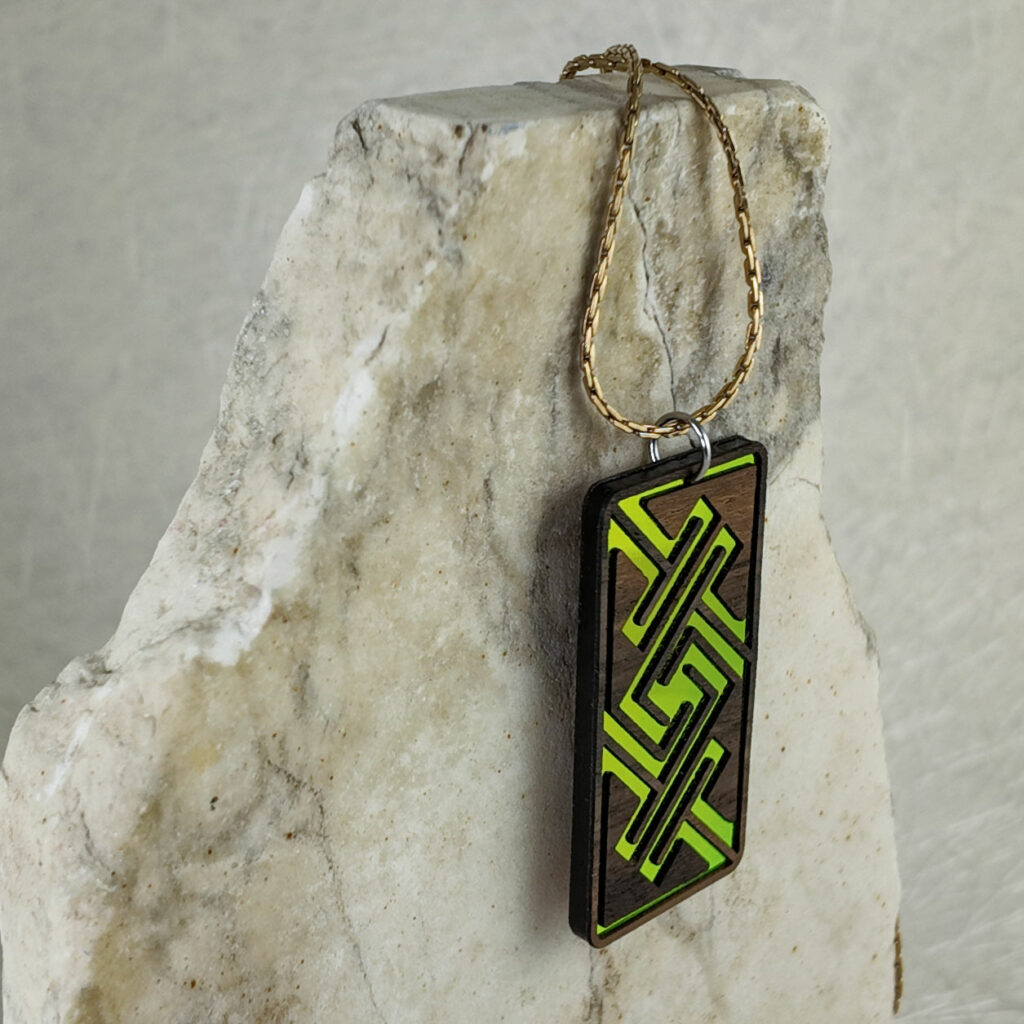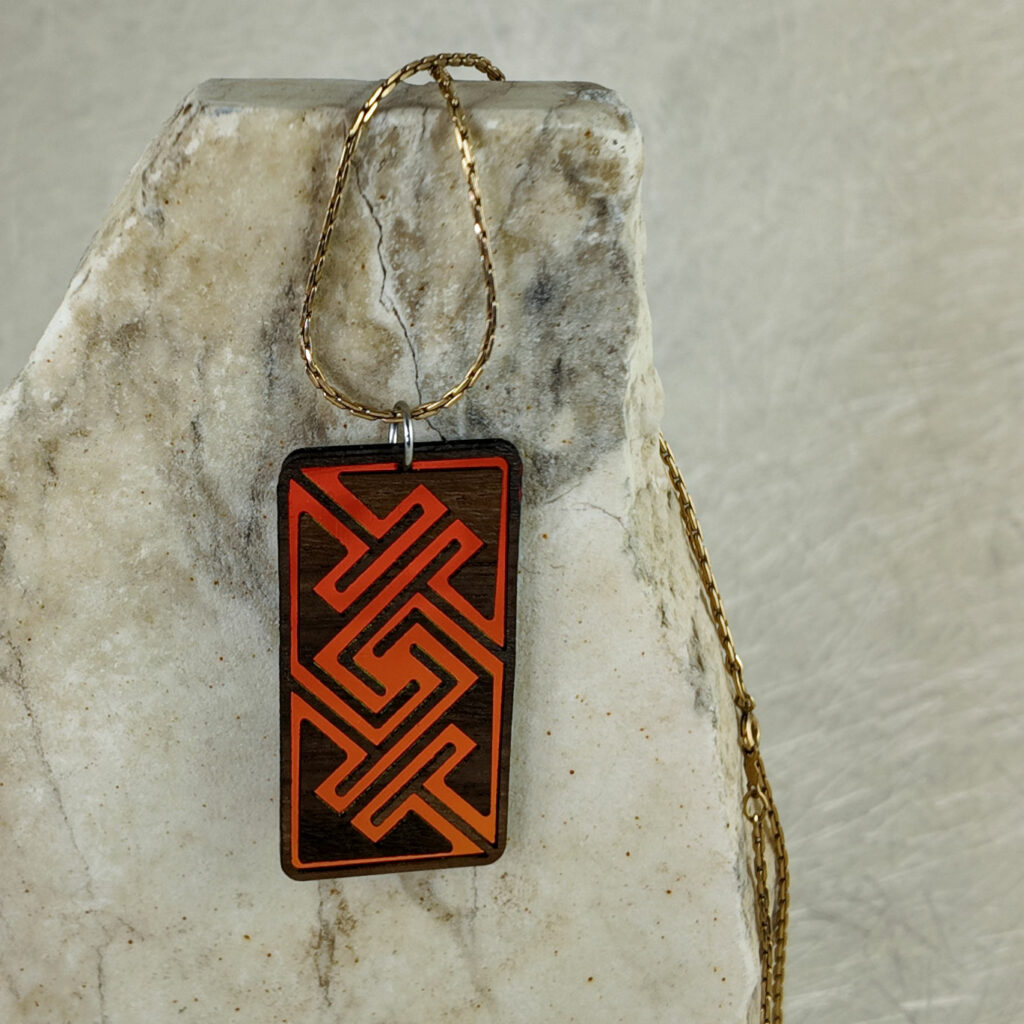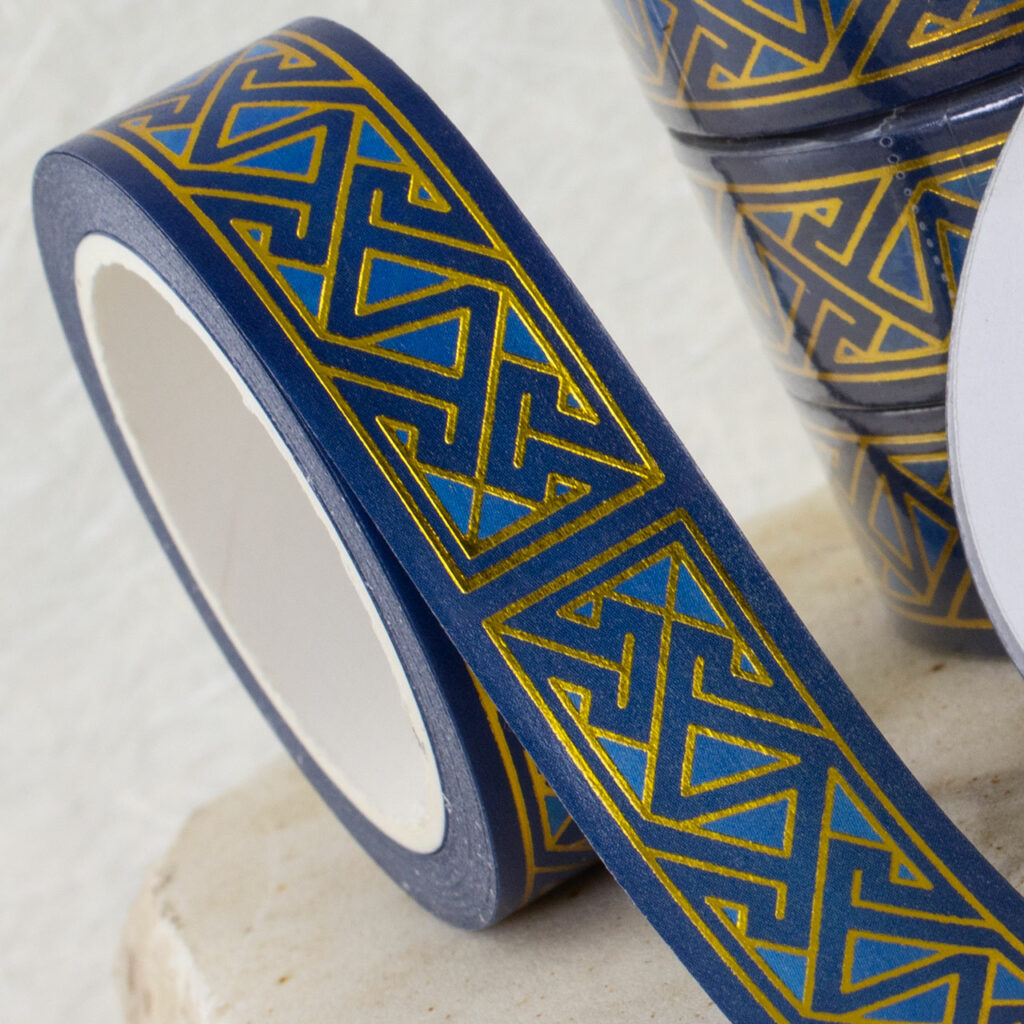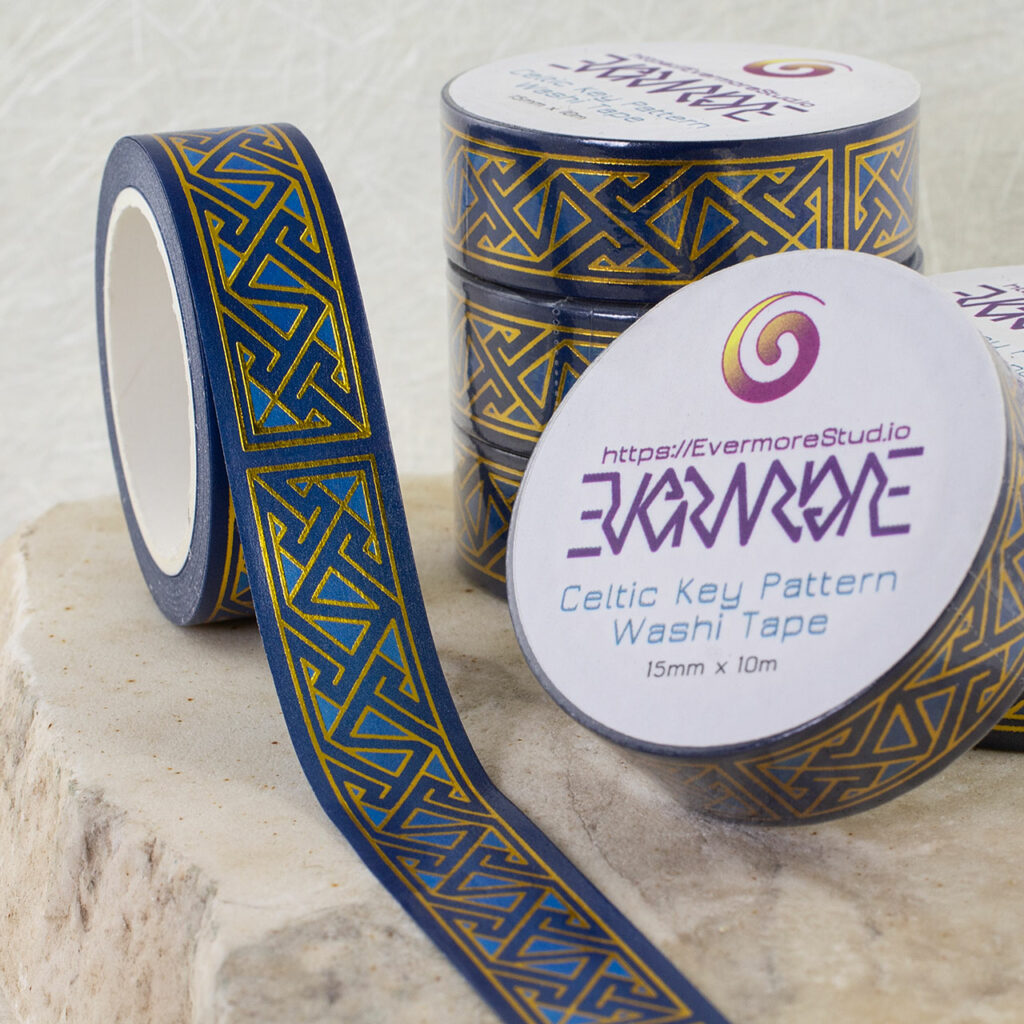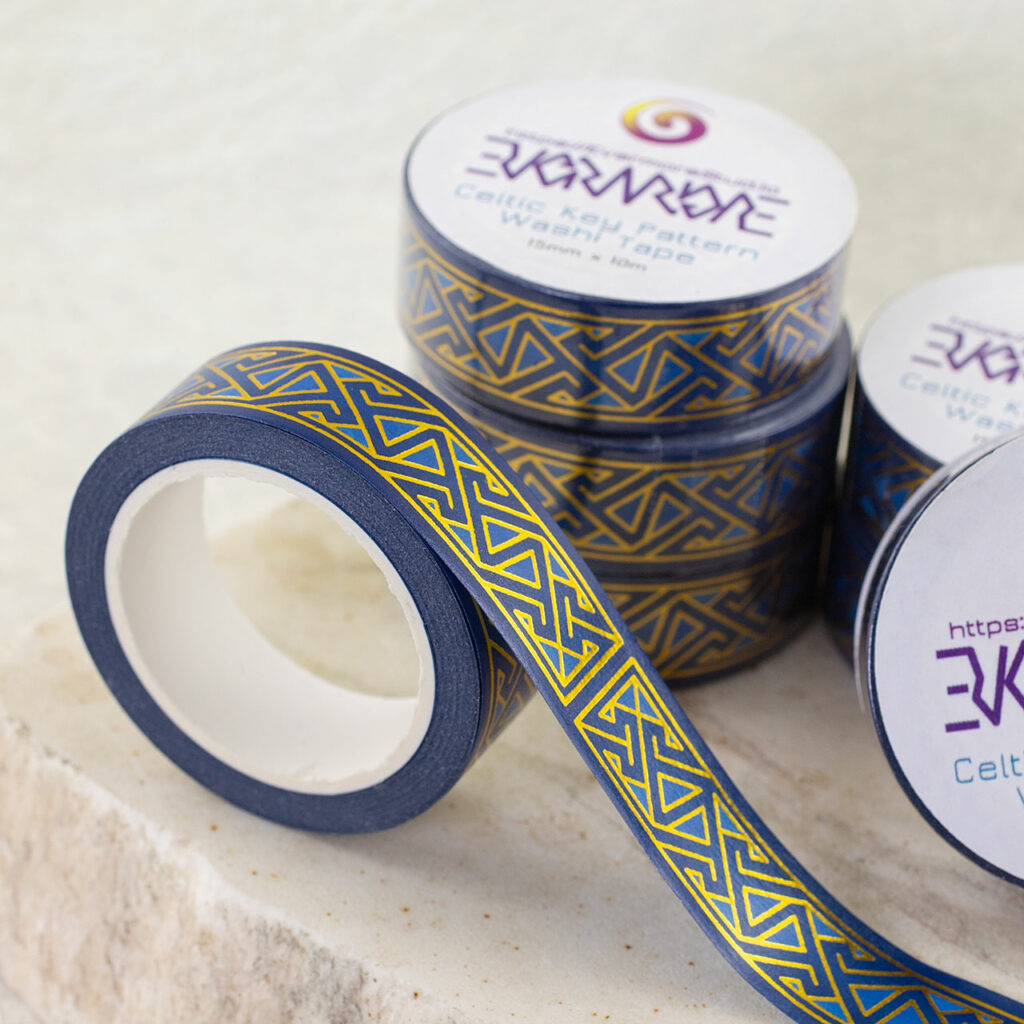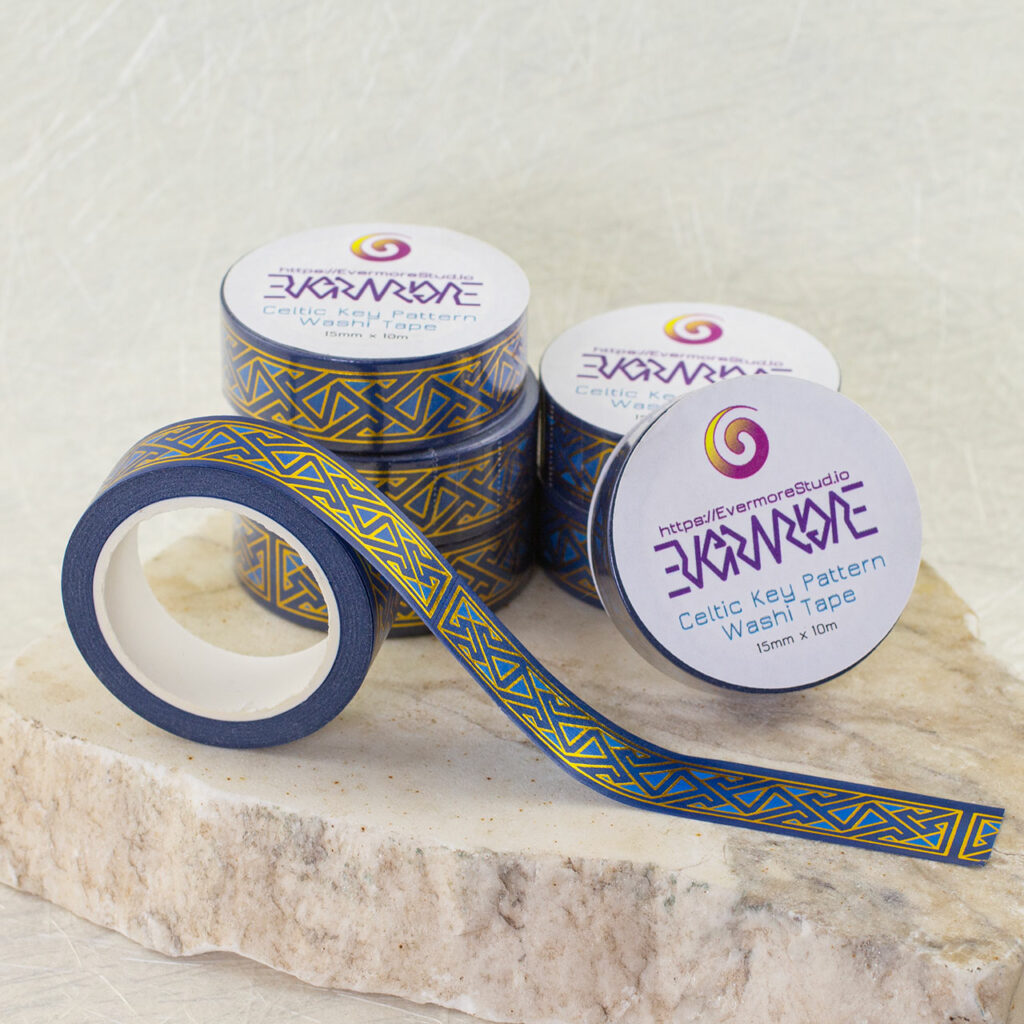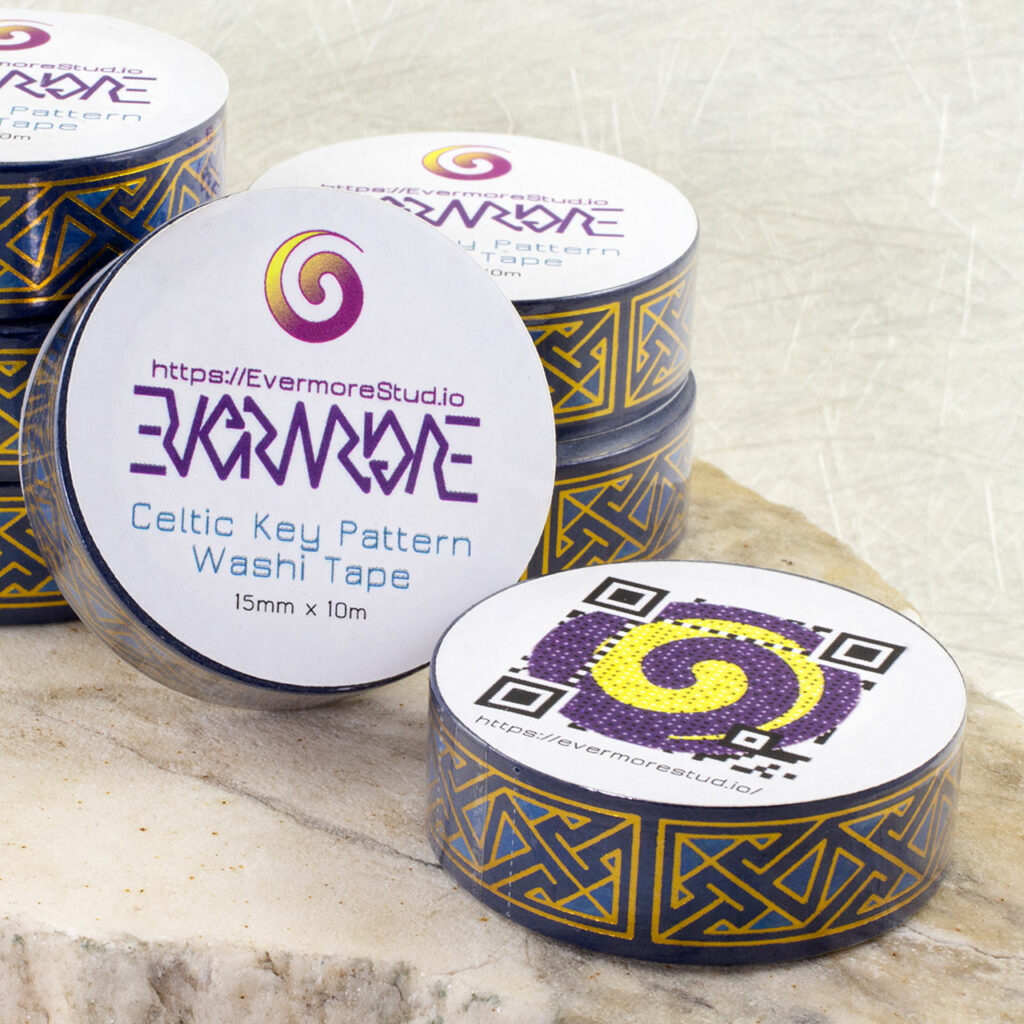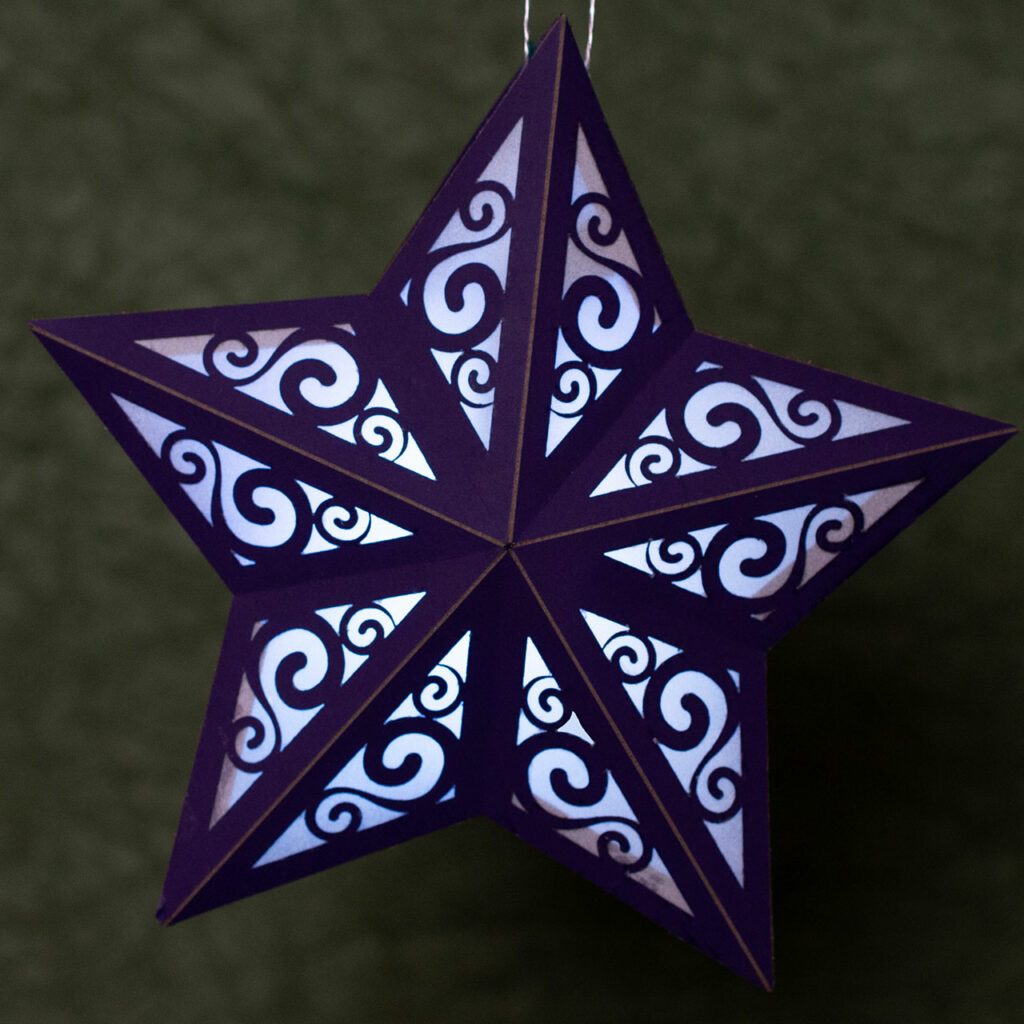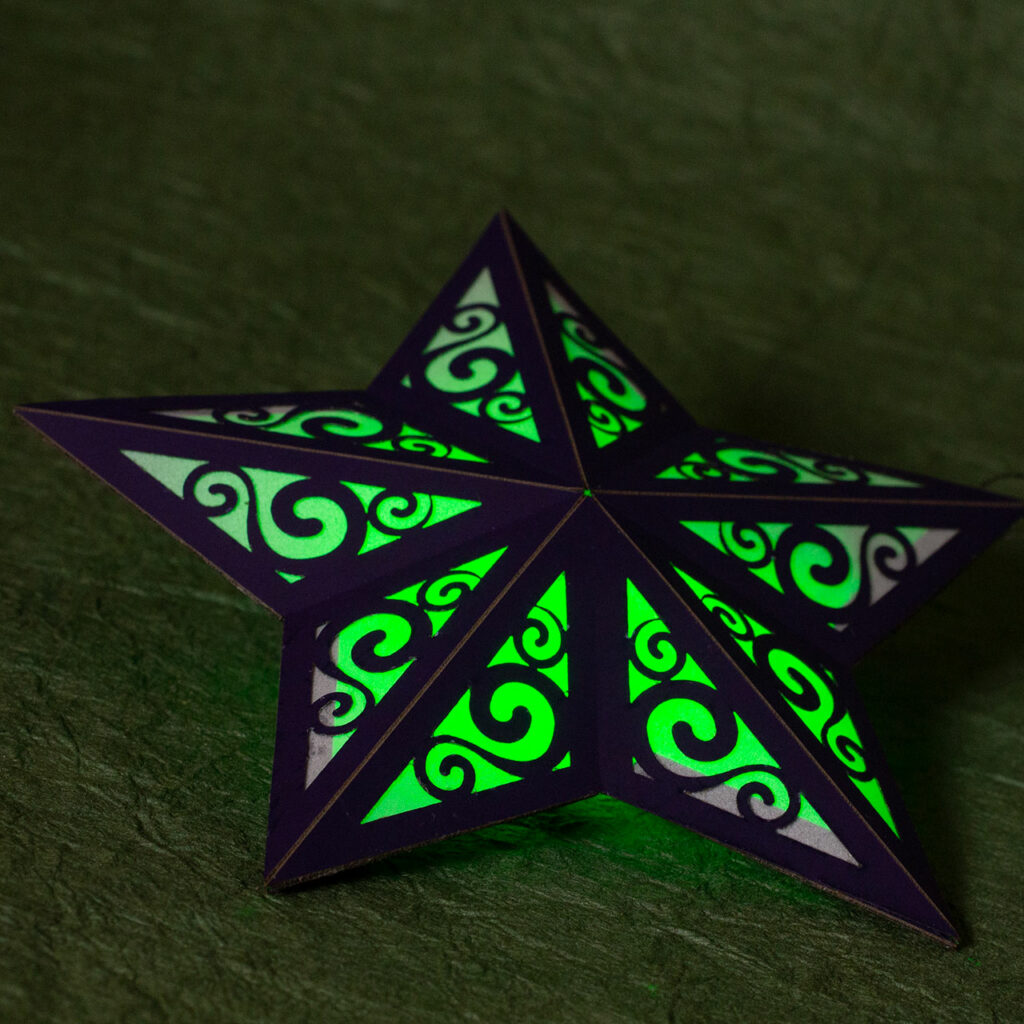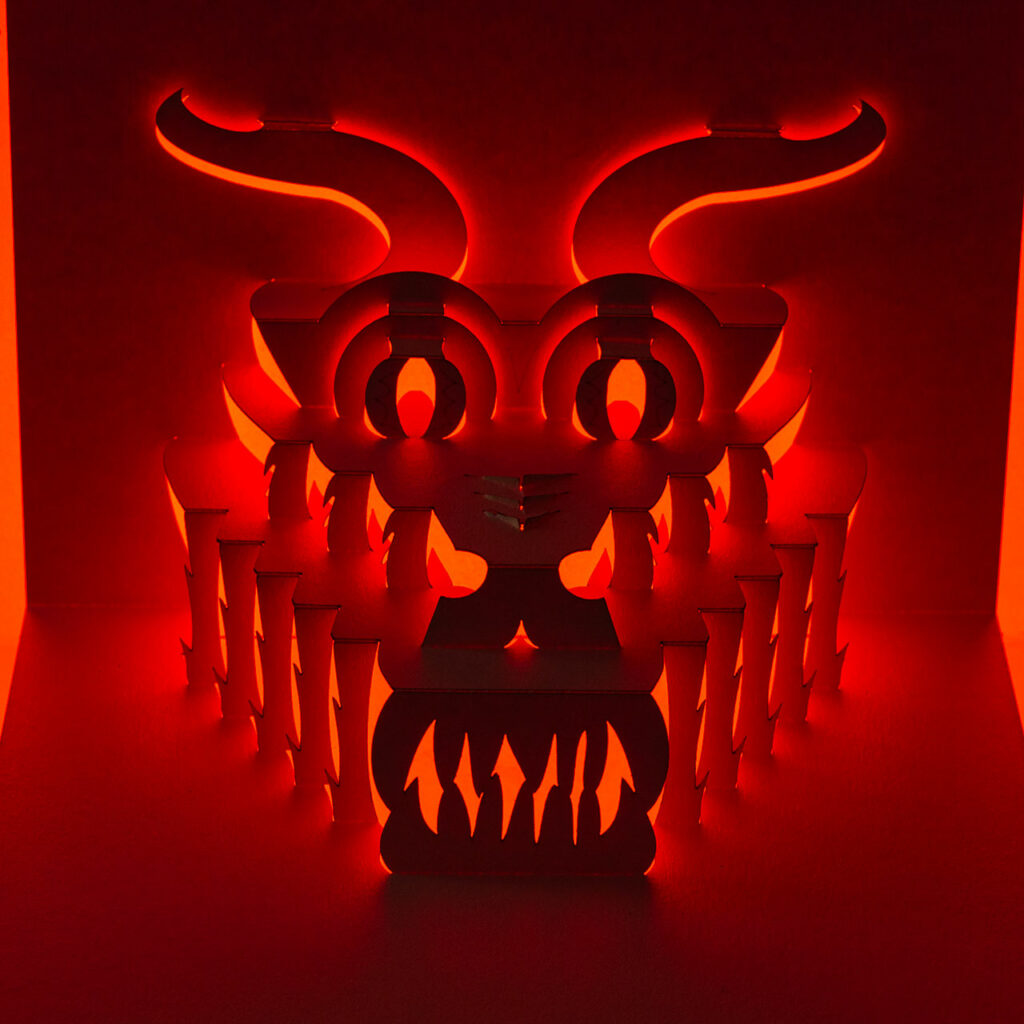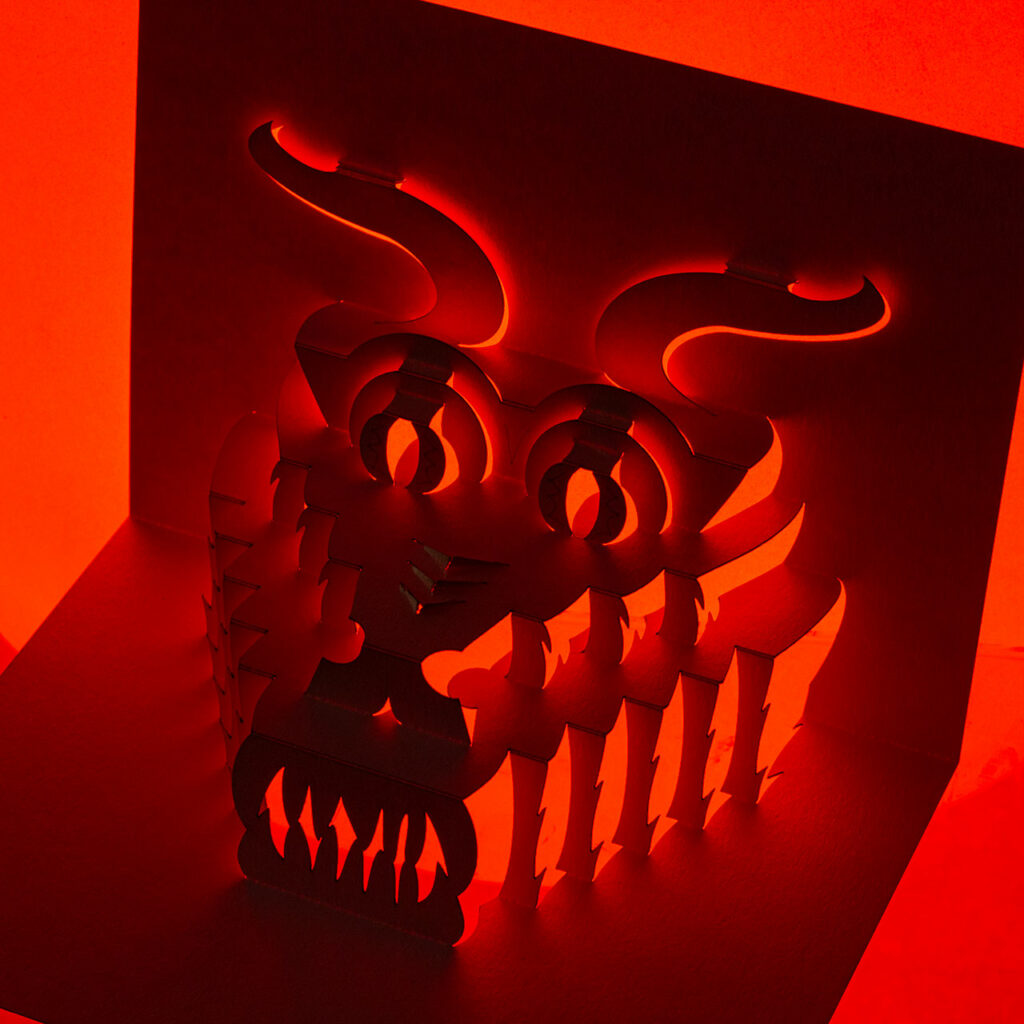Key Pattern Pendant
I have been doing a lot of computer design and modeling stuff for various studio projects lately and, was feeling restless about not making anything in the studio proper. Someone I know on Instagram was describing a technique they used to make something and, I wanted to try it. So, I took a couple of hours and made this pendant. I think it came out pretty great!
Simple Washi Tape Valentine
I made a quick Celtic key pattern washi tape valentine!
I used the laser for the cutting but, you could do this with a craft knife. Just be careful with the pressure on the left side to cut through just the washi tape.
It’s simple but, grab the pattern below.
There is some of my Celtic key pattern washi tape in the shop, if you want to play with it, too.
These files are for personal, non-commercial use only. Note that, by referencing these, you are agreeing to release any variations you create under identical terms.
Folding the Dragon
This Lunar New Year marks the start of the Year of the Wood Dragon. I made a a video on making my paper dragon to celebrate.
Celtic Key Pattern Washi Tape
You may have noticed that I love the knotwork, key patterns and spirals of Celtic art. I had a neat idea for another way to share that. I turned one of my key patterns into some fun Celtic key pattern washi tape. The test run came out great! If you want some to play with, I have a limited quantity from the first run of the Celtic Key Pattern Washi Tape available in the shop.
Light-Up Paper Star
I started playing with making a light-up paper star to use as a package or tree ornament over the holidays a few years ago. The previous attempt used separate pieces for each point of the star. While that has a great form, it was difficult to assemble and fragile at that size. This past season, I came up with a simpler design that just has a front and a back. It’s obvious enough that I am sure it has been done before but, it worked out pretty well for this.
This is cut from a heavy violet cover stock with translucent panels glued to the inner sides. A little arm holds a Chibitronics Rainbow Fade Circuit Sticker in the middle. Conductive thread runs out through a point to a 3D-printed CR2032 battery holder I designed.
There is a video showing how I made it and, the patterns and STL files are below. The patterns show the areas where I cut out scrollwork so you can add your own designs. Even just a pattern of holes in those areas without the translucent vellum would make a great star.
These files are for personal, non-commercial use only. Note that, by referencing these, you are agreeing to release any variations you create under identical terms.
Other Resources
Dragon Pop Up Card
I have really been wanting to do a dragon pop up for awhile. Though it might not be most people’s first holiday association, I had time to work on a card and, this was the one that called to me. Conveniently, this coming Lunar year is the Year of the Wood Dragon. Paper is basically wood, right?


